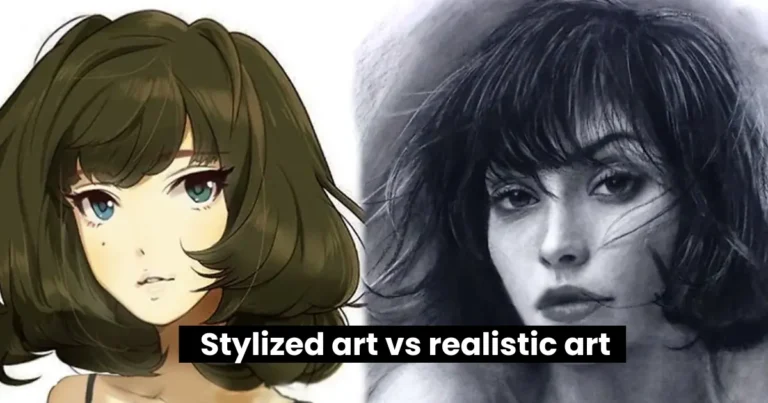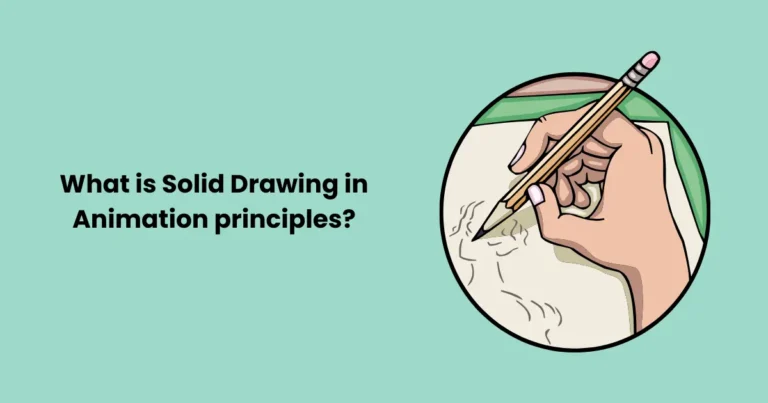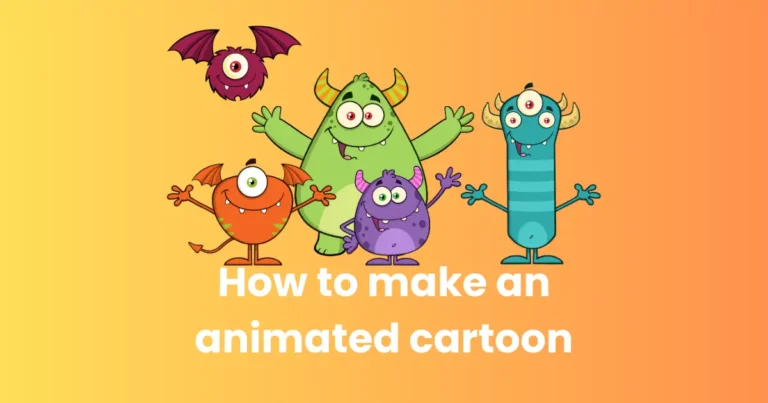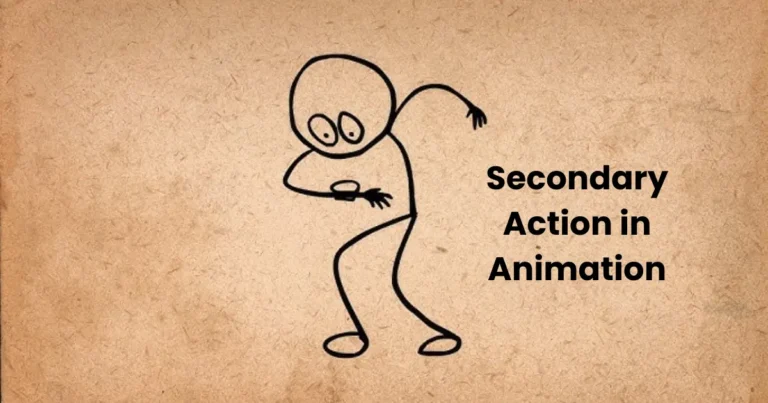Animation Staging | The 12 Basic Principles of Animation
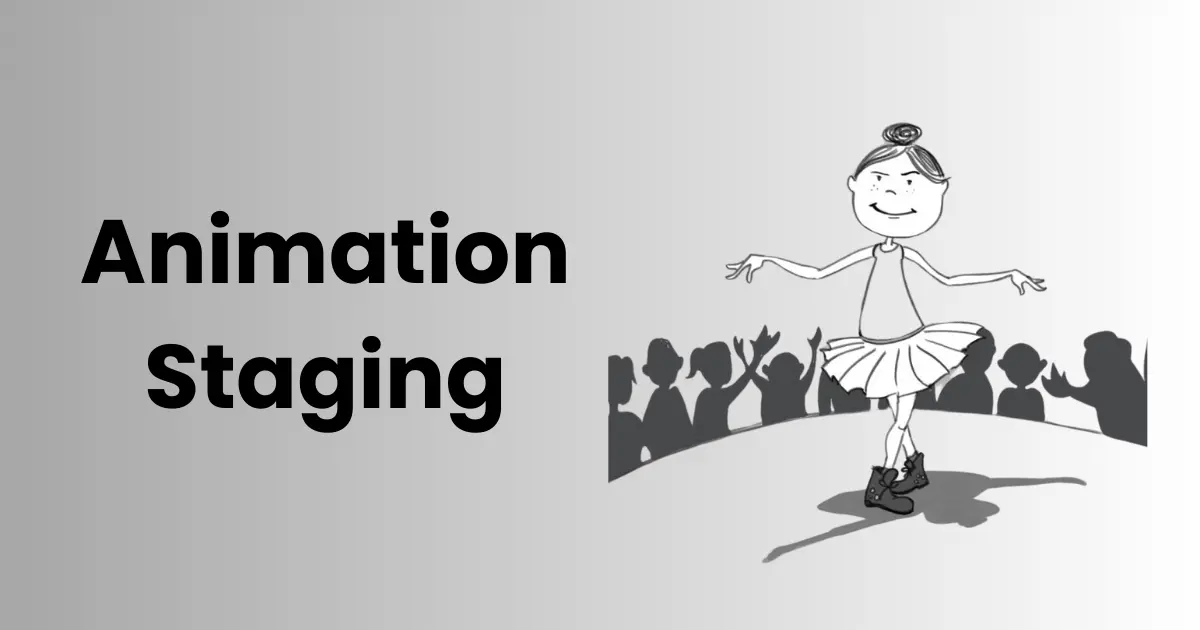
Contents
Animation staging is a fundamental concept in the animation process that involves the arrangement and presentation of elements within a scene to guide the viewer’s attention, establish context, and convey the story effectively. It is the art of composing a scene in such a way that the important actions, characters, or objects are clearly visible and the flow of the narrative is easily understood. The purpose of animation staging is to ensure that the audience focuses on the key aspects of the animation at the right time, making the story both visually engaging and emotionally impactful.
Whether working on a 2D or 3D animation, animation staging is crucial for creating dynamic and clear scenes that help drive the narrative forward. It is an essential skill for animators looking to bring their creations to life and deliver compelling visual experiences that resonate with audiences.
The Principles of Animation Staging
Animation staging relies on several key principles that guide how a scene is composed and presented to the viewer. These principles ensure clarity, focus, and emotional impact, making it easier for the audience to follow the action and feel connected to the story. Here are the most important principles of animation staging:

1. Focus and Emphasis
Focus is one of the most critical aspects of animation staging. The goal is to direct the viewer’s attention to the most important element in the scene at any given moment. This can be achieved through various methods:
- Isolating Characters: By positioning characters in a way that makes them the focal point, animators can emphasize their importance.
- Lighting and Color: Using light to highlight certain characters or areas of a scene draws attention to specific moments or emotions.
- Contrasting Elements: Placing a character in a less busy area of the scene with contrasting colors or tones can make them stand out.
2. Clear Silhouettes and Composition
A clear silhouette ensures that the character’s pose or action is immediately recognizable, even in low light or at a distance. Strong, readable silhouettes help the viewer quickly understand the action. In terms of composition:
- Framing: The way a scene is framed can emphasize or de-emphasize specific elements. A central character or object is naturally given more importance than those placed at the edges of the frame.
- Balance: Good composition balances elements within the frame to ensure that the viewer’s eye moves naturally across the scene, never feeling too crowded or empty.
3. Timing and Pacing
Timing and pacing are essential to creating effective animation staging. Proper pacing ensures that the viewer has enough time to absorb key moments, while timing helps create a natural flow to the action.
- Timing: Refers to the speed at which actions or reactions happen. Fast actions can convey urgency or excitement, while slow movements might suggest contemplation or sadness.
- Pacing: Determines how long specific actions or emotional beats should linger. Too fast and the viewer might miss important details; too slow, and the scene might lose its impact.
4. Clear Action and Reaction
Every action in an animation should lead to a clear reaction that the viewer can easily follow. The key to this principle is consistency—ensuring that the actions and reactions of the characters are easy to understand. If a character moves, the audience should intuitively know what is happening and why, even without explicit dialogue or narration.
5. Using Space and Depth
Effective use of space and depth in a scene gives the animation a sense of realism and dimension. In animation staging, space can be used to communicate the relationship between characters, establish emotional distance, or add complexity to a scene.
- Foreground and Background: By placing elements in the foreground or background, animators can create a sense of depth, making the scene feel more immersive.
- Depth Perception: Proper layering of elements in the frame helps the viewer feel as if they are looking into a 3D space, which adds richness to the animation.
6. Camera Angles and Framing
The camera angle is another vital aspect of animation staging. The right angle can significantly alter how a scene feels and how the viewer perceives the characters or actions.
- Low Angle: Can make a character appear powerful or imposing, while a high angle can suggest vulnerability or weakness.
- Wide Shots vs. Close-Ups: Wide shots establish context, showing the entire environment, while close-ups help convey the character’s emotions or emphasize key actions.
7. Lighting and Contrast
Lighting is a powerful tool in animation staging. It can influence mood, highlight important details, and create focus. Contrast—between light and dark, or between colors—can be used to guide attention.
- High Contrast: Areas with significant differences in light and dark are more noticeable and can be used to draw attention to specific elements or create dramatic effects.
- Lighting Placement: The placement of light sources can emphasize certain characters, actions, or areas of a scene, helping the viewer focus where it matters most.
Techniques for Effective Animation Staging
Effective animation staging is essential for creating clear, engaging, and emotionally impactful scenes. By using various techniques, animators can ensure that their audience understands the narrative, feels the right emotions, and remains captivated throughout the animation. Below are some key techniques for mastering animation staging:

1. Framing and Composition
Framing and composition are vital to setting the tone of a scene and guiding the viewer’s attention. Proper framing can highlight key characters or actions, while poor composition can create confusion or visual clutter. Here are some essential concepts within this technique:
- Rule of Thirds: Dividing the frame into a 3×3 grid and placing important elements along the gridlines or at their intersections creates a visually appealing composition and draws the viewer’s eye to the focal point.
- Balance and Symmetry: Proper balance ensures that the scene feels visually stable. Symmetrical compositions can create a sense of harmony, while asymmetry can evoke tension or unease, depending on the context.
- Leading Lines: Using elements in the scene (like roads, beams, or other structural lines) can guide the viewer’s eye towards the focal point, ensuring they know where to look.
2. Use of Camera Angles and Movement
Camera angles and movements can dramatically change the emotional impact of a scene. By adjusting the viewpoint, animators can communicate different perspectives or moods:
- High Angle: A high camera angle can make a character appear vulnerable, weak, or insignificant. It’s often used to emphasize power dynamics.
- Low Angle: Conversely, a low angle can make a character seem imposing, powerful, or dominant. It’s useful for creating tension or establishing authority.
- Dutch Angle (Tilted Angle): This technique involves tilting the camera to one side, often used to create disorientation or tension, suggesting something is off-balance or unstable.
- Camera Movement: Smooth camera pans or zooms can be used to reveal new aspects of the scene, while rapid cuts or shakes may suggest urgency or chaos. Tracking shots can follow a character or action, maintaining focus on the key narrative element.
3. Lighting and Shadows
Lighting is one of the most powerful tools in animation staging, as it can highlight, obscure, or add mood to a scene. How lighting is used influences both the atmosphere and the viewer’s emotional response:
- Key Light and Fill Light: The key light is the primary light source, casting the main shadows and defining the character. Fill lights soften shadows, providing a more even tone without losing detail.
- Backlighting: Placing light behind the character can create silhouettes or make the character appear mysterious or dramatic.
- Soft vs. Harsh Lighting: Soft lighting gives a gentle, welcoming feel, while harsh lighting creates high contrast, adding drama or a sense of tension.
- Shadows: Shadows can be used to define depth and add dimension to the characters or objects. They can also suggest hidden motives or concealment, enhancing suspense.
4. Character Placement and Interaction
Where characters are placed in the scene relative to one another can reveal their emotional states, relationships, or power dynamics:
- Proximity: Characters who are close to each other often share a bond or intimacy, while those placed far apart can suggest distance or conflict.
- Physical Blocking: The positioning of characters—whether they’re facing one another, turned away, or standing side by side—can convey emotional states like tension, comfort, or confrontation.
- Gestural Acting: Characters’ poses and body language should be used to convey their feelings and reactions without needing explicit dialogue. For instance, a slouched character might appear defeated, while a wide stance can make a character appear confident or confrontational.
5. Depth and Layering
Creating depth in a scene gives the animation a more immersive feel and allows for a natural progression of the viewer’s eye. Depth can be achieved by layering different elements within the scene:
- Foreground, Midground, and Background: By placing elements in these three layers, animators create a sense of space and dimension. The foreground often holds important characters or objects, while the background sets the context.
- Depth of Field: This refers to the area of the shot that is in focus. Using a shallow depth of field can blur out the background and focus attention on a single character, while a deep focus keeps both foreground and background in sharp detail.
Animation Staging and Character Interaction
Animation staging plays an essential role in how characters interact within a scene, influencing both their relationships and the way the audience perceives their dynamics. The placement, movement, and emotional energy of characters within the frame can significantly enhance storytelling, creating a more immersive and engaging experience. In this section, we’ll explore how animation staging can shape character interaction and its impact on the narrative.

1. Character Positioning and Power Dynamics
The way characters are positioned in relation to each other can subtly communicate power dynamics, emotional states, and their level of connection. Staging helps to reveal the unspoken relationship between characters and emphasizes their interactions.
- Proximity: The physical closeness of characters can convey intimacy, trust, or tension. For instance, two characters standing close together may suggest friendship, love, or conflict, while characters who stand apart or face away from each other can indicate emotional distance, disagreement, or isolation.
- Dominant and Submissive Positions: A character positioned higher or more centrally in the frame may appear dominant or in control, while a character placed lower or to the side could appear submissive or powerless. This is especially important in scenes where one character is trying to assert authority or manipulate another.
- Mirroring: When two characters mimic each other’s posture or actions, it can suggest harmony, agreement, or alignment. This visual cue can be used to highlight moments of emotional connection or mutual understanding.
2. Blocking and Emotional Conflict
Blocking refers to the physical placement and movement of characters within a scene. The way characters move or stand can express their emotional state and reveal the underlying tension or harmony between them.
- Facing vs. Back to Back: Characters facing each other typically signify open communication, while characters turned away or with their backs to each other suggest unresolved issues, mistrust, or emotional distance.
- Crossing Paths: Characters crossing paths in a scene can represent conflicting interests or opposing goals, a dynamic that can be used to highlight tension or emotional conflict. The way this crossing is staged—whether it’s abrupt or fluid—can affect the intensity of the interaction.
- Physical Barriers: Staging can also involve the use of physical barriers between characters, such as objects, walls, or even lighting contrasts. A visible barrier can symbolize emotional or physical separation, representing the conflict or division between the characters.
3. Facial Expressions and Body Language
While animation staging helps position characters within a scene, their facial expressions and body language play an equally important role in conveying their emotions and reactions.
- Focus and Gaze: A character’s gaze can dramatically influence how their relationship with another character is perceived. If one character looks directly at another, it can suggest interest, confrontation, or affection. However, if a character looks away or avoids eye contact, it can convey feelings of discomfort, guilt, or emotional withdrawal.
- Body Language: Open, relaxed posture suggests comfort, confidence, or friendliness, while closed-off body language—such as crossed arms or hunched shoulders—can imply tension, defensiveness, or insecurity. The direction a character’s body faces also communicates their emotional state, whether they are facing their problem or avoiding it.
- Subtle Movements: Small, subtle movements like a slight lean forward or a shift in weight can express curiosity, hesitation, or anticipation. These movements can subtly change the tone of an interaction, making it feel more dynamic and emotionally charged.
4. Interaction Through Actions and Reactions
The staging of character interactions is also greatly influenced by how characters react to one another’s actions. Their responses—whether physical, emotional, or verbal—help to build the narrative and deepen the audience’s understanding of their relationships.
- Response to Conflict: When one character initiates an action (e.g., raising their voice, making a dramatic gesture, or performing a sudden movement), the other character’s response can reveal a great deal about their personality and their relationship. A character who steps back may feel intimidated or uncertain, while one who stands their ground may be asserting their position.
- Mirroring Actions: Characters often mirror each other’s actions, whether consciously or subconsciously. This can emphasize harmony or synchronization between them, signaling alignment of goals or emotions. Alternatively, conflicting actions—such as one character advancing while the other retreats—can create tension or highlight a power struggle.
- Symmetry in Action: In some scenes, characters may move in mirrored ways or perform actions at the same time. This symmetry can reflect unity or agreement, reinforcing a sense of connection or shared purpose between the characters. On the other hand, asymmetry in action—such as one character doing something while another hesitates—can create suspense, foreshadow conflict, or indicate disparity in their motivations.
5. Staging Through the Environment
The environment itself can also contribute to how characters interact and how their relationship is perceived. Staging isn’t limited to the characters themselves; it includes how the environment impacts the interaction between them.
- Space and Isolation: A scene in which one character is isolated in the foreground or placed far away from another in the background can emphasize emotional loneliness, exclusion, or neglect. On the other hand, characters placed within a shared space (e.g., sitting at the same table) can suggest collaboration or a shared goal.
- Shared Objects and Props: The presence of shared objects in a scene—such as a table, a piece of furniture, or an item of clothing—can serve as an indirect way of staging character relationships. If two characters share an item, it can symbolize emotional connection or mutual importance, while a character’s disregard for an object that’s important to the other might indicate emotional separation.
6. Dialogue and Character Interaction
While not directly a part of animation staging, dialogue heavily influences how character interaction is staged. Dialogue provides context for the physical movements and positioning of the characters in a scene.
- Timing and Syncing with Movement: The pacing of a character’s speech or a key moment in dialogue can influence how characters are staged in relation to one another. For example, a dramatic pause or a character’s change in tone may prompt a shift in body language, facial expression, or physical position.
- Reaction to Dialogue: How one character reacts to the words or actions of another is an integral part of staging. Whether they respond with surprise, confusion, anger, or joy, these reactions are often staged through small gestures, facial expressions, or shifts in posture, adding layers of meaning to the interaction.
Animation Staging in 2D vs. 3D Animation
Animation staging is crucial in both 2D and 3D animation, but the techniques and approaches used can differ significantly due to the nature of the two-dimensional and three-dimensional spaces. Understanding how animation staging functions in both 2D and 3D animation is essential for creating effective and visually compelling narratives. In this section, we will explore the key differences and similarities between animation staging in 2D vs. 3D animation and how these differences impact the storytelling process.

1. Space and Dimensions
The most significant difference between 2D and 3D animation is the use of space. In 2D animation, characters and objects exist on a flat surface, meaning they are constrained to a two-dimensional plane. On the other hand, 3D animation allows for depth and movement in all directions, giving the characters and objects a sense of volume and space. This impacts the staging in the following ways:
- 2D Animation Staging: The lack of depth in 2D staging means that all character interactions must be carefully planned within the confines of the flat canvas. Staging focuses heavily on horizontal and vertical positioning within the frame, and depth is implied through layering, perspective, and the arrangement of objects and characters in the scene. Artists often use background layers to give the illusion of depth.
- 3D Animation Staging: 3D animation offers greater flexibility with depth and perspective. Characters and objects can move around the scene with greater freedom, and the positioning of elements can shift dynamically. This creates a more immersive experience, where the viewer can appreciate the interaction of characters and objects in a true three-dimensional space. The ability to move the camera around the scene adds another layer of complexity to staging in 3D animation.
2. Camera Work and Movement
Both 2D and 3D animation rely on the camera to establish perspective and framing, but in 3D animation, the camera is far more dynamic and versatile.
- 2D Animation Staging: In traditional 2D animation, the camera is typically fixed, or its movement is simulated through pans, zooms, and other camera tricks. The stage is often static, with the camera changing positions only for specific dramatic effect or to focus attention on a particular element in the scene. The camera work in 2D animation relies on artistic techniques such as background motion or character animation to simulate depth and movement.
- 3D Animation Staging: In 3D animation, the camera is a physical object within the scene, allowing for more intricate and complex movement. The camera can move freely in all directions, zooming in and out, rotating around characters, or tilting to highlight certain aspects of the action. This provides more flexibility for staging, allowing for dynamic shots and interactions that can enhance the narrative. Cinematic techniques such as tracking shots, dolly zooms, and depth of field can be seamlessly incorporated into 3D animation.
3. Character Placement and Interaction
Staging in both 2D and 3D animation aims to highlight character interactions, but the techniques used to position and move characters within a scene differ.
- 2D Animation Staging: In 2D animation, characters are typically positioned along the X and Y axes, with their size and orientation adjusted to convey different emotional states or relationships. Since characters in 2D are flat, their interaction with each other often involves changes in pose, facial expressions, and hand gestures. Their relative size and positioning in the frame play a significant role in communicating power dynamics or emotional tension. Furthermore, staging in 2D focuses on perspective through creative use of backgrounds, shading, and layering to give depth and interaction without actual three-dimensional movement.
- 3D Animation Staging: In 3D animation, characters can be placed in the scene with more freedom. They can move along all three axes (X, Y, Z), which gives them more room to interact within a truly three-dimensional environment. Characters can move closer or farther from the camera, walk around objects, or interact physically in a more spatially accurate way. The relationships between characters are enhanced by their physical positioning and how they move through the space, which can involve walking around each other, sharing or avoiding space, or reacting to their environment in more immersive ways.
4. Depth and Perspective
Creating depth and perspective in the frame is a crucial element of animation staging, but how this is achieved differs between 2D and 3D animation.
- 2D Animation Staging: In 2D animation, depth is a visual illusion. Artists create depth by varying the size of objects (larger objects appear closer to the camera, while smaller objects are farther away) and by using overlapping elements or parallax scrolling (where background elements move at different speeds to simulate depth). However, the characters and objects themselves remain flat, which means that the illusion of depth has to be carefully constructed through color, shadows, and clever placement within the scene.
- 3D Animation Staging: In 3D animation, depth is inherent to the scene. Since the environment is modeled in three dimensions, characters and objects naturally occupy a space that has true depth and volume. The ability to rotate the camera or adjust the light sources adds to the realism of the scene. Additionally, 3D animation allows for more detailed interaction with the environment, where objects can be moved, rotated, or animated in three-dimensional space, creating a more immersive and dynamic scene.
5. Lighting and Shadows
Lighting is a fundamental element of animation staging in both 2D and 3D animation, but it functions differently due to the nature of each medium.
- 2D Animation Staging: In 2D animation, lighting is often simulated through shading and color choices. Artists use various techniques like cel shading or painted lighting effects to create the illusion of light and shadow. The way light interacts with the environment is typically more stylized, and shadows may be drawn manually to fit the desired aesthetic. Staging in 2D often requires careful placement of lighting to guide the viewer’s focus, often highlighting key actions or expressions.
- 3D Animation Staging: In 3D animation, lighting is much more dynamic and realistic. Since 3D scenes are modeled in three-dimensional space, light sources can be placed anywhere in the scene, and their interaction with objects can be calculated in real time. The lighting can change based on the movement of objects, characters, or even the camera itself. Shadows are generated automatically based on the positions of light sources and objects in the scene, contributing to a more natural and fluid sense of depth and realism.
Conclusion
Animation staging is an essential element of visual storytelling, playing a crucial role in how audiences engage with a narrative. From creating emotional connections to guiding attention and enhancing action, effective staging brings depth and clarity to the animation. By examining case studies from iconic films like The Lion King, Toy Story, Frozen, Spirited Away, and Zootopia, we see how staging is used to craft powerful cinematic experiences.
These examples illustrate the importance of understanding space, timing, and character interaction to make the animation more immersive and impactful. As animation technology evolves, the principles of staging remain fundamental, regardless of whether the animation is 2D or 3D. By mastering these techniques, animators can continue to create compelling stories that resonate with audiences, ensuring that each scene not only looks visually appealing but also serves the greater narrative purpose. Animation staging will undoubtedly remain a cornerstone of animation, shaping how stories are told for years to come.

